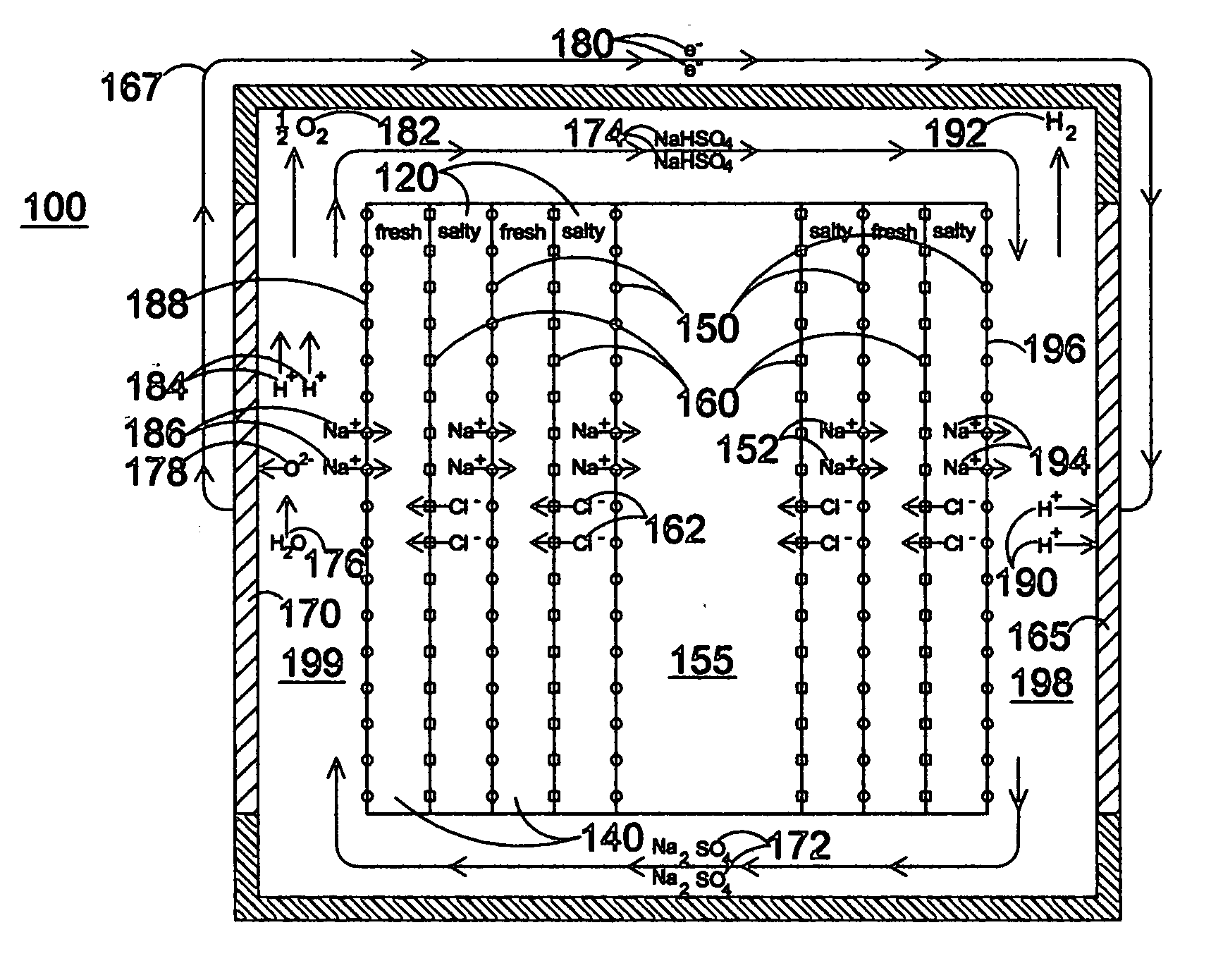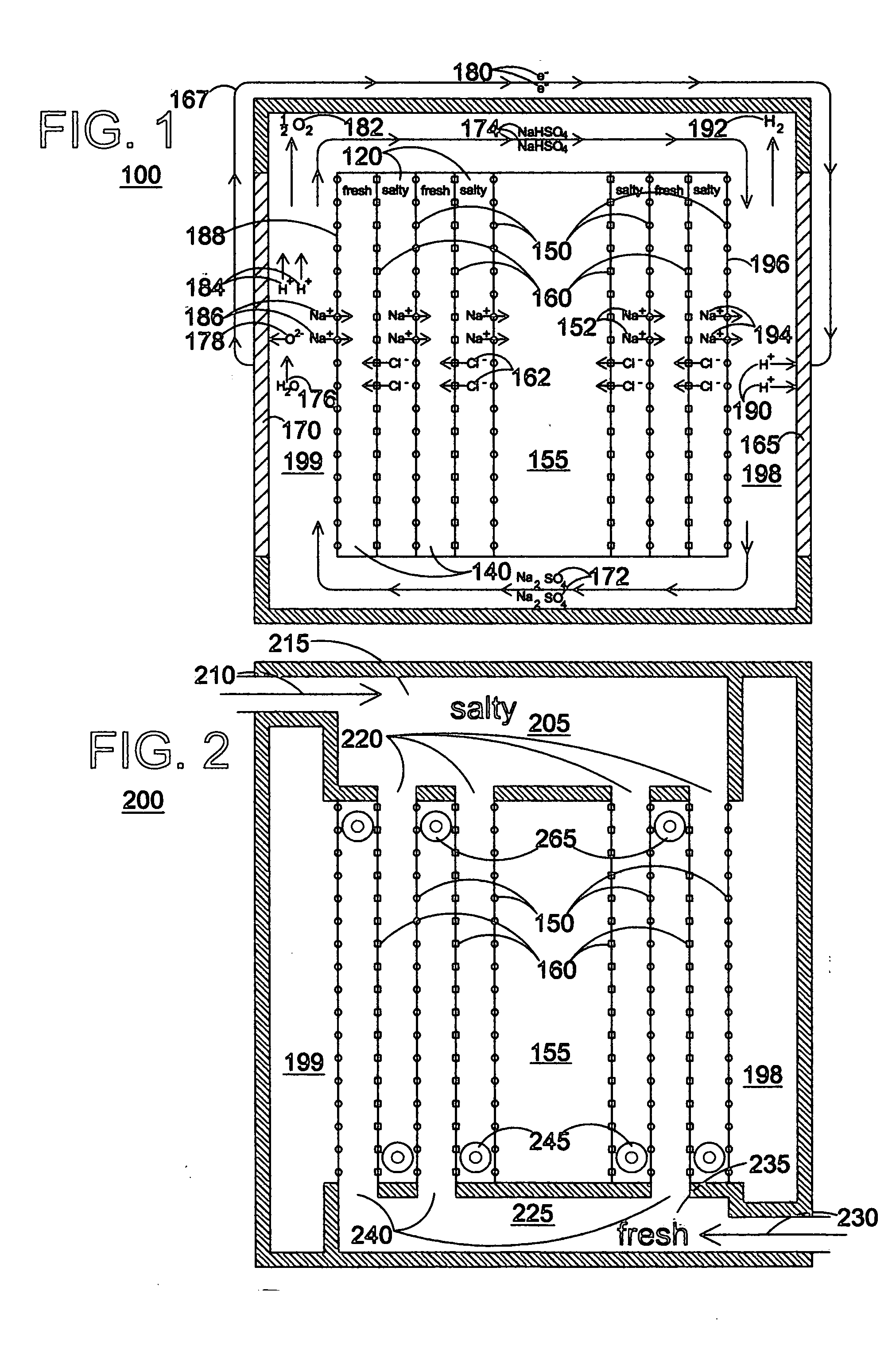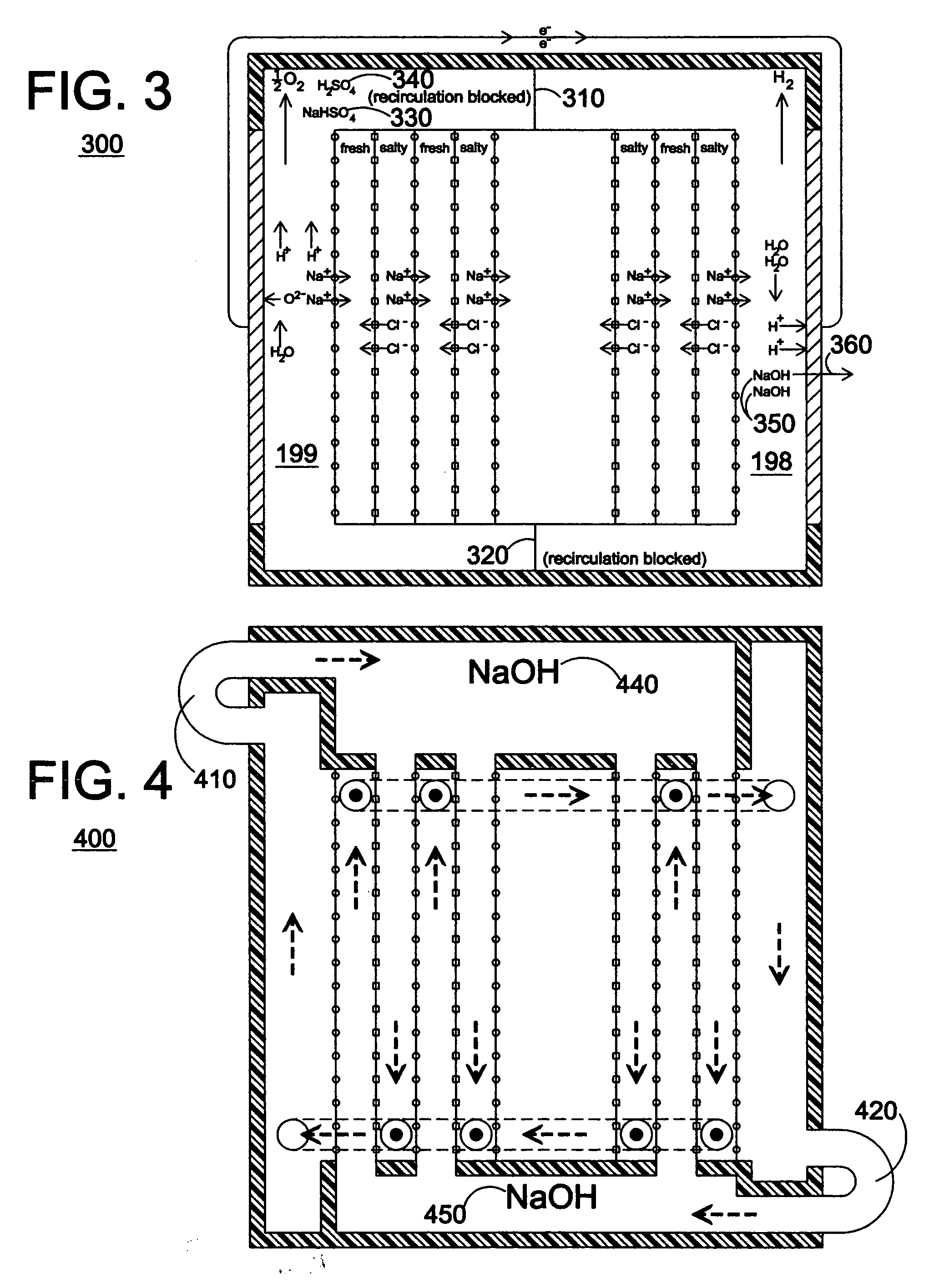Reverse electrodialysis for generation of hydrogen
a reverse electrodialysis and hydrogen technology, applied in the direction of electrolysis components, electrolysis generators, electrolytic processes, etc., can solve the problems of a significant fraction of the dissipated energy being captured and recovered, and a tremendous dissipation of thermodynamic energy, and previously at a prohibitive cos
- Summary
- Abstract
- Description
- Claims
- Application Information
AI Technical Summary
Problems solved by technology
Method used
Image
Examples
Embodiment Construction
[0050] Hydrogen Generation by Merging Reverse Electrodialysis with Electrolysis FIGS. 1 and 2 provide schematic representations of two views of a device for hydrogen production combining electrolysis with reverse electrodialysis, or RED. They also indicate the most significant ion migrations and chemical reactions. For comparison, the Netherlands project reported by Post (see Background of the Invention) achieved electric currents utilizing a redox chemistry involving iron ions transitioning back and forth between Ferrous (Fe2+) and Ferric (Fe3+) forms. This chemistry minimized electrode potentials and thereby maximized electrical efficiency. Electrolyzing salt water without special reagents would produce hydrogen, but with the byproducts of chlorine and sodium hydroxide. The present invention might use this or a similar chemistry selectively for antimicrobial cleaning, though there are compatibility problems with chlorine and at least some ion-selective membranes. For generation of...
PUM
 Login to View More
Login to View More Abstract
Description
Claims
Application Information
 Login to View More
Login to View More - R&D
- Intellectual Property
- Life Sciences
- Materials
- Tech Scout
- Unparalleled Data Quality
- Higher Quality Content
- 60% Fewer Hallucinations
Browse by: Latest US Patents, China's latest patents, Technical Efficacy Thesaurus, Application Domain, Technology Topic, Popular Technical Reports.
© 2025 PatSnap. All rights reserved.Legal|Privacy policy|Modern Slavery Act Transparency Statement|Sitemap|About US| Contact US: help@patsnap.com



